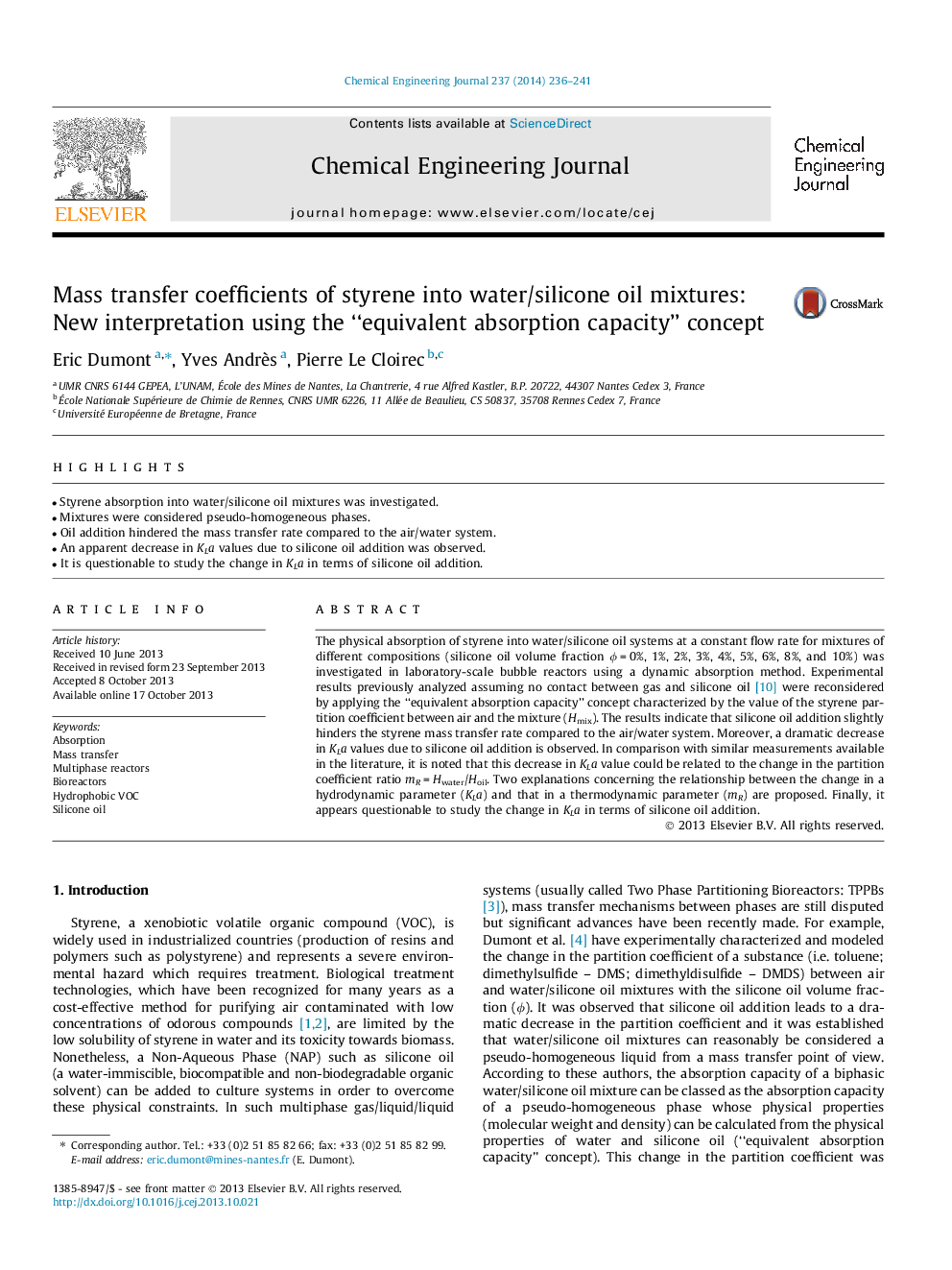| Article ID | Journal | Published Year | Pages | File Type |
|---|---|---|---|---|
| 148204 | Chemical Engineering Journal | 2014 | 6 Pages |
•Styrene absorption into water/silicone oil mixtures was investigated.•Mixtures were considered pseudo-homogeneous phases.•Oil addition hindered the mass transfer rate compared to the air/water system.•An apparent decrease in KLa values due to silicone oil addition was observed.•It is questionable to study the change in KLa in terms of silicone oil addition.
The physical absorption of styrene into water/silicone oil systems at a constant flow rate for mixtures of different compositions (silicone oil volume fraction ϕ = 0%, 1%, 2%, 3%, 4%, 5%, 6%, 8%, and 10%) was investigated in laboratory-scale bubble reactors using a dynamic absorption method. Experimental results previously analyzed assuming no contact between gas and silicone oil [10] were reconsidered by applying the “equivalent absorption capacity” concept characterized by the value of the styrene partition coefficient between air and the mixture (Hmix). The results indicate that silicone oil addition slightly hinders the styrene mass transfer rate compared to the air/water system. Moreover, a dramatic decrease in KLa values due to silicone oil addition is observed. In comparison with similar measurements available in the literature, it is noted that this decrease in KLa value could be related to the change in the partition coefficient ratio mR = Hwater/Hoil. Two explanations concerning the relationship between the change in a hydrodynamic parameter (KLa) and that in a thermodynamic parameter (mR) are proposed. Finally, it appears questionable to study the change in KLa in terms of silicone oil addition.
